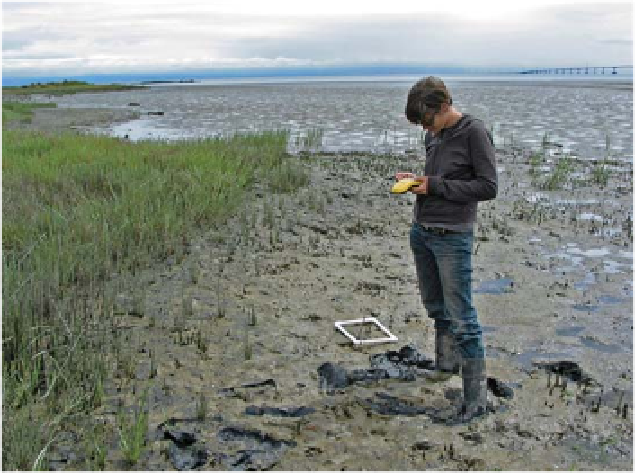Biology Reference
In-Depth Information
The resulting genetic variation among spartina plants is astounding,
with different hybrids adapting to different salinity, soil, and tidal condi-
tions. Some grow well in high marsh, and others engulf open mudflats.
According to the state's aquatic invasive species management plan, “Hy-
brid smooth cordgrass can produce up to 23 times the seed of native cord-
grass, grow taller and/or faster, and tolerate high or low salinity.” Hybrids
can turn diverse marshes into monocultural meadows, crowd out mean-
dering tidal channels, and transform open mudflats into uniform expanses
of green.
This invader is considered such a threat to habitat and ecosystem resto-
ration efforts around the bay that the Invasive Spartina Project's efforts to
track down, dig up, spray, and kill both purebred and hybrid cordgrass
have widespread public and private support. In 2000, surveyors found 470
acres of hybrid smooth cordgrass, though the original Atlantic parent had
become rare. By 2006, when the project began full-scale treatment, they
found nearly 2,000 acres of hybrid throughout the region's intertidal bay-
lands—a more than 300 percent increase. By 2009, despite aggressive
treatment and the reduction of the most infested areas of the hybrid to just
250 acres, pockets were still peppering the bayshore. Project biologists en-
deavor to monitor every possible hybrid haven, surveying over 60,000
acres by land, boat, and air. As of 2010, 167 marshes around the bay were
still expected to require treatment.
Biologist Jen McBroom documenting, with the help of a yellow GPS unit, invasive
spartina spread and hybridization with native species at Coyote Point near San
Mateo. (Jude Stalker)


